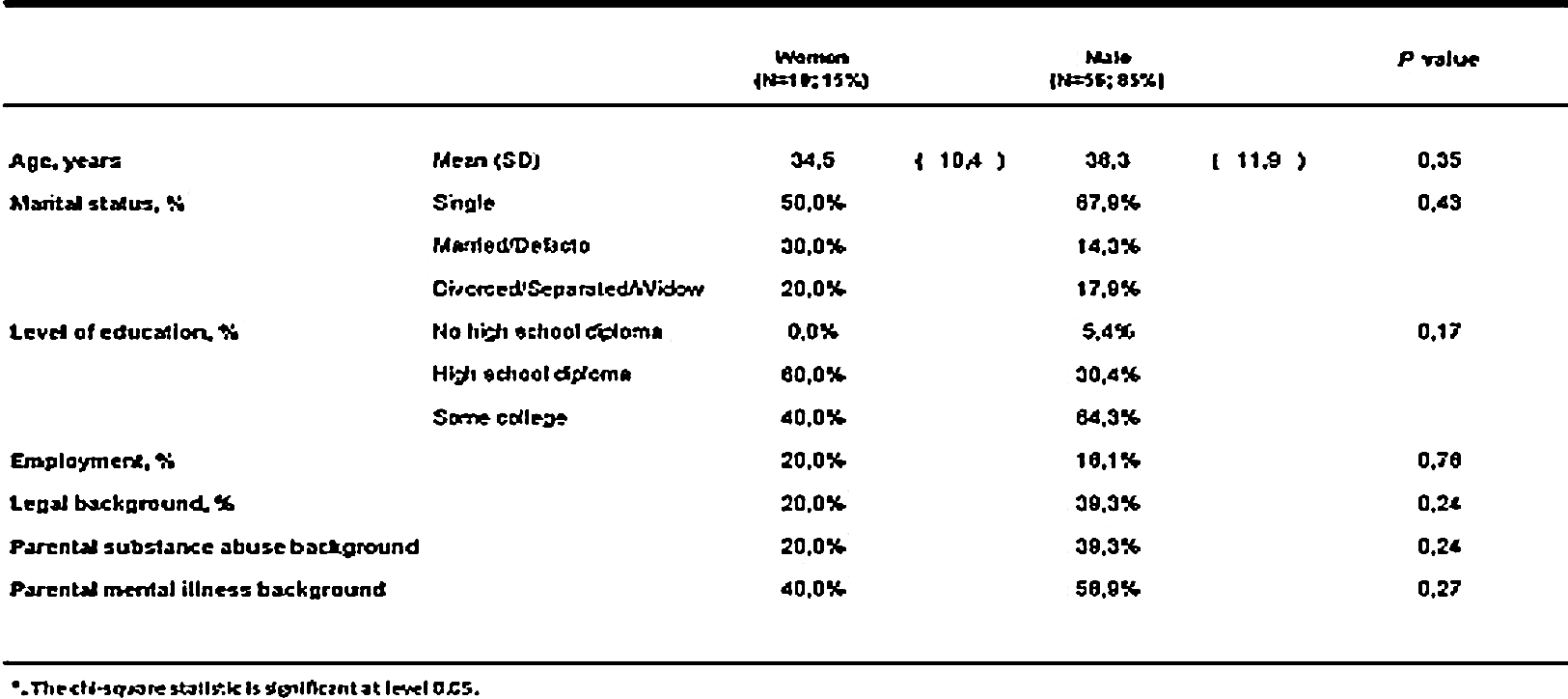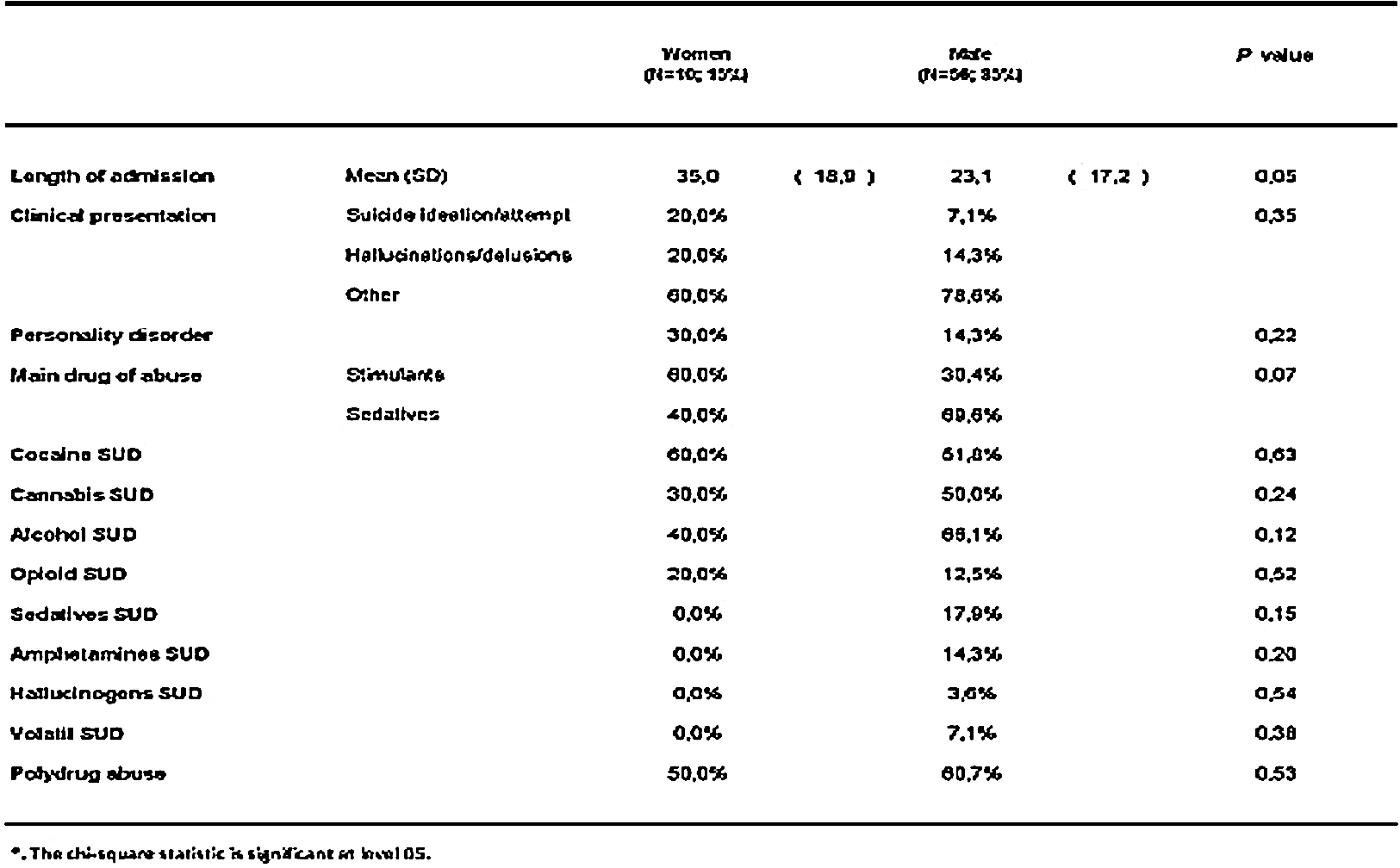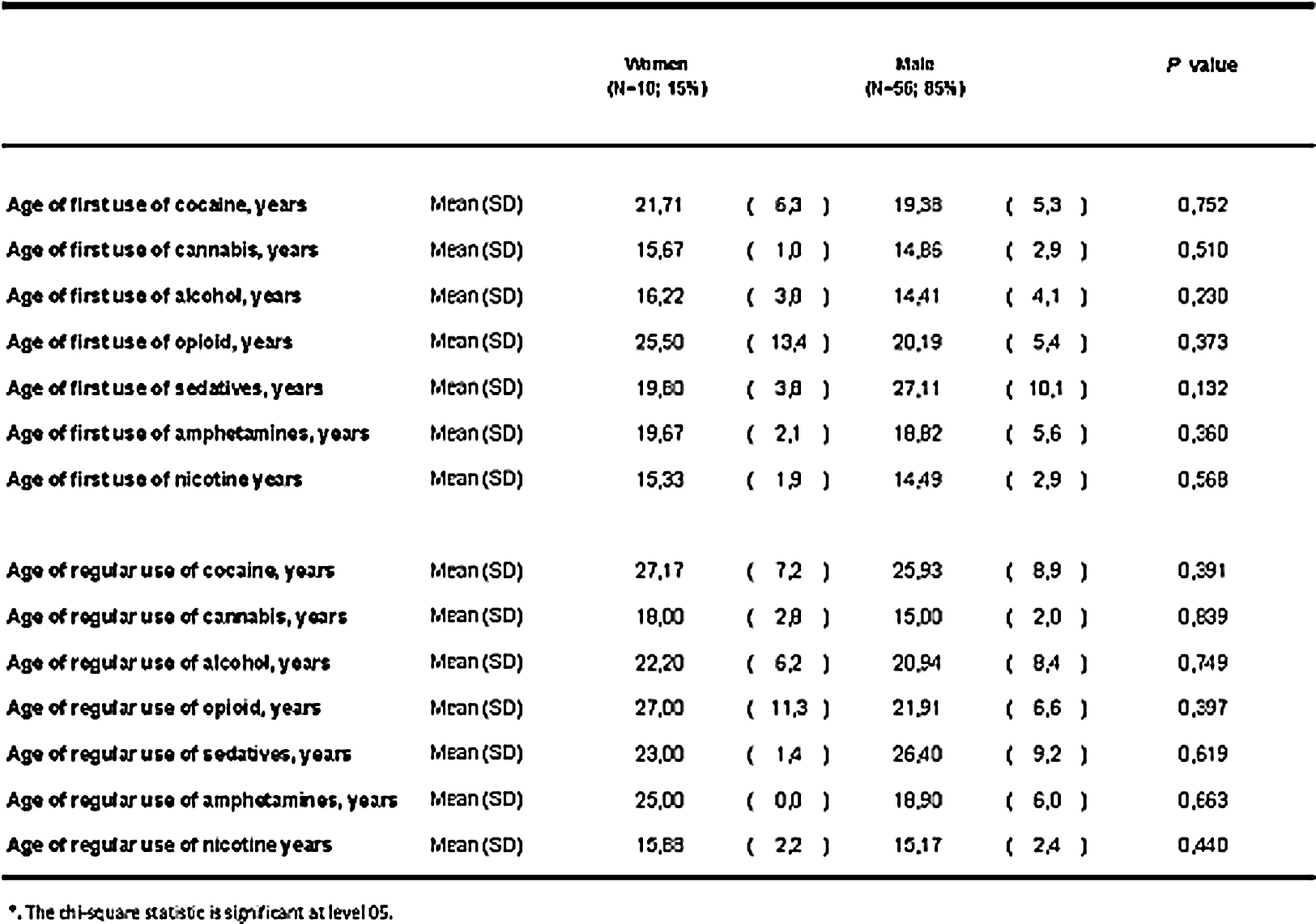No CrossRef data available.
Published online by Cambridge University Press: 23 March 2020
Women with bipolar disorder are more prone to psychiatric co-morbidity as anxiety, substance use disorders, eating disorders and borderline personality disorder. Nevertheless, substance abuse disorders as co-morbidity in bipolarity are higher in males than females.
To describe differential characteristics of patients admitted to a psychiatric unit referring to gender in a group of patients with bipolar disorder co-morbid with substances disorders (dually diagnosed patients).
Sociodemographic, clinical and administrative data of all patients diagnosed with bipolar admitted to a dual diagnosis during a 3-year period were collected. The psychiatric diagnosis was made according to DSM-IV-R criteria.
From the whole sample (n = 66), males (84.8%) were prevalent. Mean age were 37.71 ± 11.7 and mean length of admission was 24.94 ± 17.9 days. Cannabis (34.8%) and cocaine (33.3%) were the most frequent SUD diagnosis and main reasons for admittance were conduct disorder (33.3%) and mania (25.8%).
Women showed higher length of admission, higher severity scores at admission and greater reduction in severity scores along hospitalisation. No other clinical or sociodemographic differences were found comparing both groups of patients (Tables 1–4).
Women affected by dual bipolar disorder showed higher severity scores at admission but achieved better remission rates during hospitalisation.
Table 1
Demographic characteristics of both groups.

Table 2
Clinical and functional variables at admission in both groups.

Table 3
Historical data about age of drug use in both groups.

Table 4
Severity Scores for both groups of study.

The authors have not supplied their declaration of competing interest.
Comments
No Comments have been published for this article.